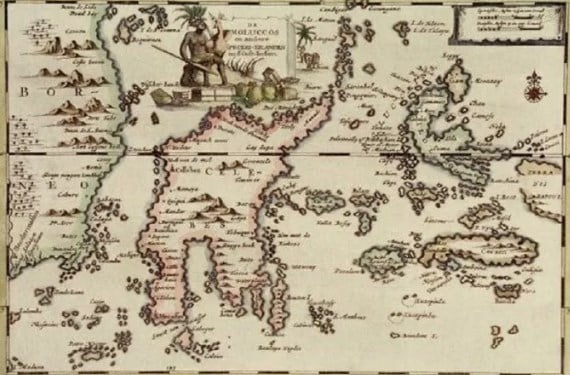History of the Saragosa Treaty – The Saragosa Treaty is an agreement between the Portuguese and Spanish which was signed on April 22, 1529. The purpose of the agreement was so that the two parties would not clash over the colonial territory in the Maluku region. The trigger was the arrival of the Spaniards in Maluku, after the Portuguese had previously occupied the area.
The results of the Saragosa Treaty required Spain to leave the Maluku region. In addition, there was an agreement regarding the Spanish and Portuguese territories. The treaty is so named because it was held in the city of Saragosa, Spain.
Saragosa Treaty
The following will share the history of the Saragosa Treaty , including the background of the agreement, the characters involved, the results and contents of the agreement to the consequences and impacts.
Background of the Saragosa Treaty
The history of the Saragosa negotiations was motivated by the conflict between the Spaniards and the Portuguese in the Maluku region. This is because both parties want to monopolize the spice trade in the Maluku region.
Initially the Portuguese arrived in Maluku in 1512 AD. They were received by the King of Ternate, who at that time was in conflict with the Tidore Kingdom. The king of Ternate asked the Portuguese for help to build a fort. In return, the Portuguese were given the right to a trade monopoly.
But in 1521 AD, the Spanish expedition arrived in Tidore. The arrival of Spain started the conflict between the Portuguese-Spanish. Both sides accused the other of violating the Tordesillas Agreement, the previous agreement between Portugal and Spain.
For this reason, a new agreement was then held between Portugal and Spain to resolve the previous dispute, where the agreement was named the Treaty of Zaragoza or the Saragosa Agreement.
Characters of the Saragosa Covenant
The Saragosa Agreement involved two parties, namely the Spanish and the Portuguese. From the Spanish side it was represented by Emperor Charles V. While from the Portuguese side it was represented by King John III. The two heads of government signed the dossier of this agreement.
Time and Place of the Saragosa Treaty
The Treaty of Saragosa was signed on April 22, 1529. The place where the Saragosa negotiations were held was in the city of Saragosa, Spain. This treaty was signed by the two heads of government, King John III and Emperor Charles V.
Purpose of the Saragosa Treaty
The purpose of the Saragosa agreement was that Portuguese and Spanish troops did not compete with each other in fighting over the kingdoms and colonies, so an agreement was made from both parties, Spain and Portugal which had been agreed upon.
Contents of the Saragosa Treaty
The contents of the Saragosa Treaty are as follows:
- Earth is divided into two influences, namely the influence of the Spanish and Portuguese.
- The Spanish territory stretched from Mexico to the west to the Philippine islands and the Portuguese territory stretched from Brazil to the east to the Maluku islands. The area west of the Saragosa line was under Portuguese control.
Impact of the Saragosa Treaty
There were several implications of the Treaty of Saragosa. The main thing is that the Spaniards had to leave the Moluccas. Instead, they concentrate their activities on the Philippines. Meanwhile, Maluku became the Portuguese territory.
Now that’s the historical reference of the Saragosa Agreement including the background, purpose, time and place, parties and characters involved, content and results and the impact of holding the Saragosa negotiations. Hopefully it can be a historical reference.


